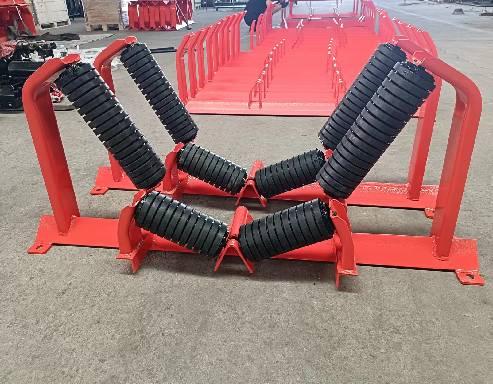 Afrikaans
Afrikaans  Albanian
Albanian  Amharic
Amharic  Arabic
Arabic  Armenian
Armenian  Azerbaijani
Azerbaijani  Basque
Basque  Belarusian
Belarusian  Bengali
Bengali  Bosnian
Bosnian  Bulgarian
Bulgarian  Catalan
Catalan  Cebuano
Cebuano  Corsican
Corsican  Croatian
Croatian  Czech
Czech  Danish
Danish  Dutch
Dutch  English
English  Esperanto
Esperanto  Estonian
Estonian  Finnish
Finnish  French
French  Frisian
Frisian  Galician
Galician  Georgian
Georgian  German
German  Greek
Greek  Gujarati
Gujarati  Haitian Creole
Haitian Creole  hausa
hausa  hawaiian
hawaiian  Hebrew
Hebrew  Hindi
Hindi  Miao
Miao  Hungarian
Hungarian  Icelandic
Icelandic  igbo
igbo  Indonesian
Indonesian  irish
irish  Italian
Italian  Japanese
Japanese  Javanese
Javanese  Kannada
Kannada  kazakh
kazakh  Khmer
Khmer  Rwandese
Rwandese  Korean
Korean  Kurdish
Kurdish  Kyrgyz
Kyrgyz  Lao
Lao  Latin
Latin  Latvian
Latvian  Lithuanian
Lithuanian  Luxembourgish
Luxembourgish  Macedonian
Macedonian  Malgashi
Malgashi  Malay
Malay  Malayalam
Malayalam  Maltese
Maltese  Maori
Maori  Marathi
Marathi  Mongolian
Mongolian  Myanmar
Myanmar  Nepali
Nepali  Norwegian
Norwegian  Norwegian
Norwegian  Occitan
Occitan  Pashto
Pashto  Persian
Persian  Polish
Polish  Portuguese
Portuguese  Punjabi
Punjabi  Romanian
Romanian  Russian
Russian  Samoan
Samoan  Scottish Gaelic
Scottish Gaelic  Serbian
Serbian  Sesotho
Sesotho  Shona
Shona  Sindhi
Sindhi  Sinhala
Sinhala  Slovak
Slovak  Slovenian
Slovenian  Somali
Somali  Spanish
Spanish  Sundanese
Sundanese  Swahili
Swahili  Swedish
Swedish  Tagalog
Tagalog  Tajik
Tajik  Tamil
Tamil  Tatar
Tatar  Telugu
Telugu  Thai
Thai  Turkish
Turkish  Turkmen
Turkmen  Ukrainian
Ukrainian  Urdu
Urdu  Uighur
Uighur  Uzbek
Uzbek  Vietnamese
Vietnamese  Welsh
Welsh  Bantu
Bantu  Yiddish
Yiddish  Yoruba
Yoruba  Zulu
Zulu drive belt idler
Understanding Drive Belt Idlers Their Importance and Functionality
Drive belt idlers are crucial components in the automotive and machinery sectors, playing a significant role in ensuring the smooth operation of engines and mechanical systems. These idlers are designed to guide and tension the drive belts, which are responsible for transferring power from the engine to various accessories like the alternator, water pump, and air conditioning compressor.
The primary function of a drive belt idler is to maintain proper tension on the drive belt. A properly tensioned belt ensures that the power is efficiently transmitted, preventing slippage and wear. When the drive belt is too loose, it can slip off the pulleys, leading to a loss of power and potential damage to the engine or associated components. Conversely, if the belt is too tight, it can lead to premature wear or even breakage, resulting in expensive repairs and downtime.
Drive belt idlers come in different shapes and sizes, depending on their specific application. Most commonly, they feature a smooth outer surface, allowing the belt to glide easily while providing the necessary tension. There are also variations such as adjustable idlers, which allow for modifications to the tension as needed. This adaptability can be particularly useful in settings where the load on the drive system changes frequently.
drive belt idler

In addition to tensioning, drive belt idlers also help align the drive belt with the pulleys. Proper alignment is essential for minimizing wear and preventing belt failure. Misalignment can lead to uneven wear on the belt and the components it drives, further complicating maintenance and increasing costs.
The materials used in manufacturing drive belt idlers are also critical. Many modern idlers are made from high-strength plastics or metals, ensuring durability and resistance to wear. Bearings within idlers are designed to withstand various loads and speeds, reducing the risk of failure during operation. Regular maintenance, including inspection of the idler for signs of wear, can prolong its lifespan and ensure optimal performance.
Replacing a worn or damaged drive belt idler is a maintenance task that should not be overlooked. Signs of a failing idler may include unusual noises, such as squeaking or grinding, or visual symptoms like cracking or fraying in the drive belt itself. Timely replacement can prevent more severe issues, including total drive belt failure, which can lead to significant engine damage.
In conclusion, drive belt idlers are essential components that contribute significantly to the reliability and efficiency of various mechanical systems. Understanding their function and importance can aid in proper vehicle maintenance and help prevent costly repairs. By ensuring that idlers are regularly inspected and replaced when necessary, vehicle owners and operators can maintain optimal performance and extend the life of their engines and machinery. Whether in cars, trucks, or industrial equipment, the role of drive belt idlers is indispensable, making them a key focus in the realm of mechanical engineering and automotive care.
-
Revolutionizing Conveyor Reliability with Advanced Rubber Lagging PulleysNewsJul.22,2025
-
Powering Precision and Durability with Expert Manufacturers of Conveyor ComponentsNewsJul.22,2025
-
Optimizing Conveyor Systems with Advanced Conveyor AccessoriesNewsJul.22,2025
-
Maximize Conveyor Efficiency with Quality Conveyor Idler PulleysNewsJul.22,2025
-
Future-Proof Your Conveyor System with High-Performance Polyurethane RollerNewsJul.22,2025
-
Driving Efficiency Forward with Quality Idlers and RollersNewsJul.22,2025





























